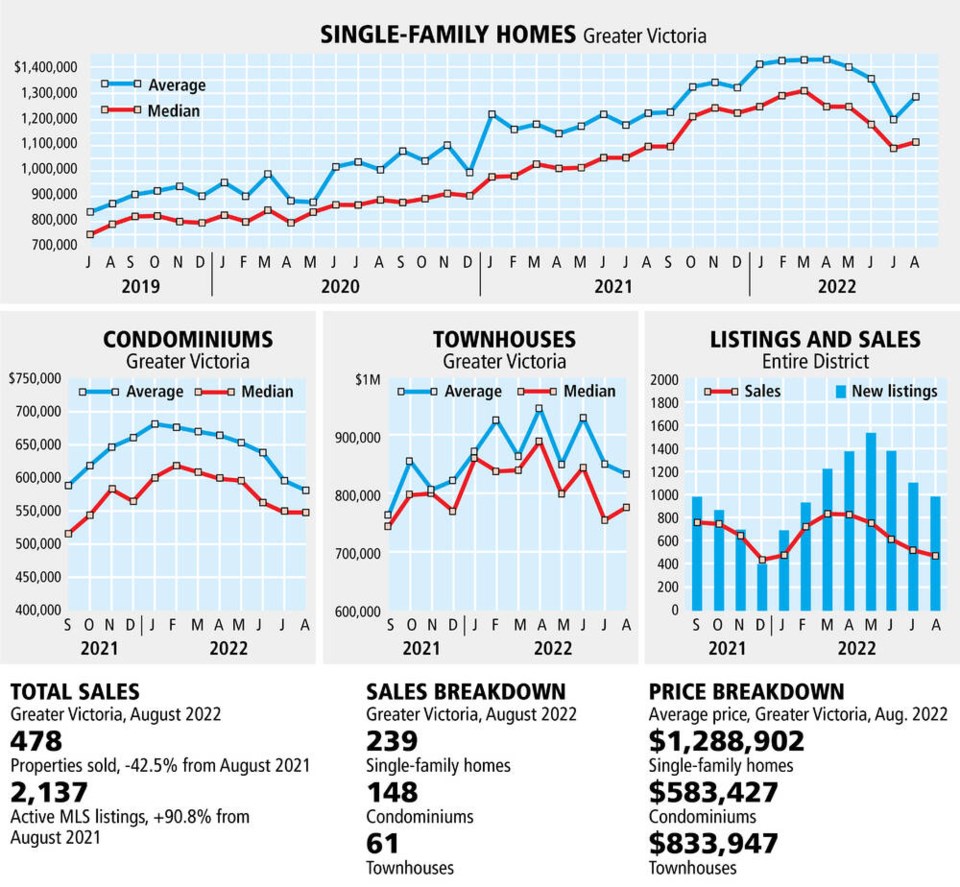The capital region’s real estate market ended August with just over 40 per cent fewer sales than the same month a year ago, reflecting an anticipated slowdown due to factors such as higher interest rates.
Home prices are softening as balance returns to the market following what the B.C. Real Estate Association described as a “deep sellers market” in March.
Prices for single-family homes in Victoria’s core and for condominiums in the region dropped in both July and August, according to board statistics, while the number of properties available for sale has been climbing.
Last month, 478 sales were recorded through the Victoria Real Estate Board’s multiple listing service, which is considerably down from August 2021, when 831 properties changed hands.
August, a traditionally slow month in the real estate sector, also saw sales slide 6.3 per cent from July.
Both single-family homes and condominiums saw declines in sales numbers, the board said in its monthly report released Thursday.
Prices also softened in August from July.
The benchmark value for a single-family home in Victoria’s core was $1.39 million in August, down 2.9 per cent from $1.43 million in July, but up from $1.2 million in August 2021.
As for condos, the benchmark value in the core was $621,900 last month, a drop of 2.8 per cent from July, when it was $639,900. The benchmark in August of last year was $509,900.
A benchmark reflects the value of a typical home in a particular community.
The average price of a single-family home in Greater Victoria was $1.28 million in August, up from $1.199 million in July. The average for August 2021 was $1.224 million.
August’s average for condominiums was $583,427, down from $598,039 in July. In August 2021, the average price for a condo was $552,353.
Victoria board president Karen Dinnie-Smyth said that after two years of market conditions that favoured home sellers, sales have diminished in the past few months and inventory levels have been slowly increasing.
Real estate watchers look at the ratio of sales to active listings — represented as the percentage of available listings that sold in the past month — to help evaluate supply and demand.
A balanced market is considered to be in the 15 to 20 per cent range, Dinnie-Smyth said. A year ago, the capital region’s market was at 94 per cent, but it is now at 28.14 per cent, indicating a return to a more balanced market.
At the end of August, there were 2,137 active listings with the Victoria board. That’s down 1.2 per cent from July, but almost double the number of August 2021 listings, at 1,120.
cjwilson@timescolonist.com



